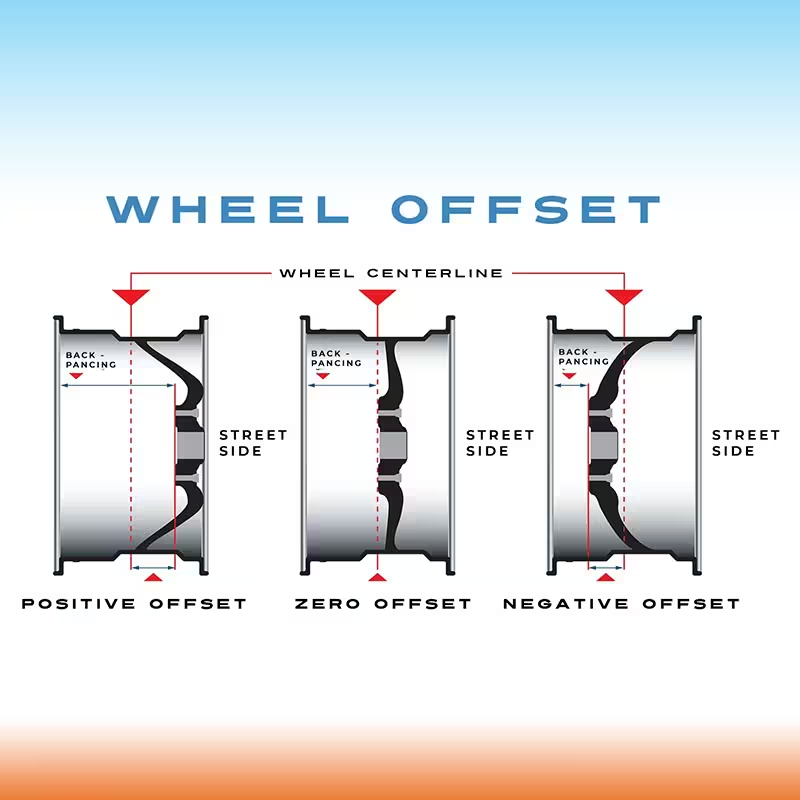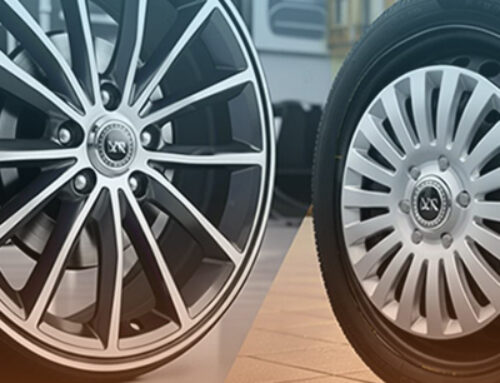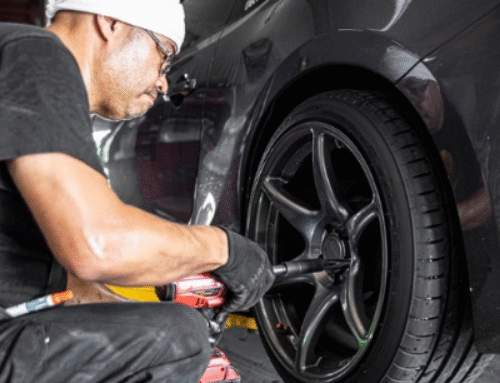What is Wheel Offset?
When upgrading your vehicle’s wheels, understanding is crucial term “wheel offset” refers to how your wheels mount in your wheel wells, directly impacting performance, handling, and safety. Whether you want to enhance aesthetics or performance, getting the offset right is key. This article explains everything you need to know about helping you make an informed decision.
Ofset indicates the distance between the centerline of the wheel and the hub mounting surface. This measurement, typically in millimeters, directly affects how far the wheel sits inward or outward in the wheel well. Proper offset plays a significant role in both the look and function of your vehicle.
Types of Wheel Offset
There are three main types:
- Zero Offset: The hub mounting surface aligns exactly with the centerline of the wheel, allowing the wheel to sit evenly within the wheel well.
- Positive Offset: The hub mounting surface is positioned closer to the outer edge of the wheel. This setup is common in modern vehicles where wheels sit further inside the fenders, preventing interference with suspension components.
- Negative Offset: The hub mounting surface is closer to the inner edge of the wheel, causing it to protrude more outward. This “deep-dish” style is popular in aggressive fitments and custom builds.
Why is Wheel Offset Important?
Choosing the correct offset ensures proper fitment and optimal performance. Conversely, the wrong offset can lead to various problems, such as:
- Rubbing Issues: The inner edge of the wheel or tire may contact suspension components, brakes, or body parts like fenders.
- Compromised Handling: An incorrect offset can negatively affect vehicle stability, especially during sharp turns.
- Premature Wear: Misaligned wheels due to improper offset may result in uneven tire wear and additional stress on suspension parts.
Understanding Backspacing vs. Wheel Offset
While backspacing and offset are related concepts, they are not the same. Backspacing measures the distance from the mounting surface to the back edge of the wheel, typically in inches. On the other hand, offset is measured in millimeters. Both factors are essential in determining how a wheel fits within the wheel well.
Common Issues from Incorrect Offset
- Too Much Positive Offset:
- Rubbing against suspension components or bodywork
- Interference with brake parts
- Reduced handling performance
- Increased risk of tire failure
- Too Much Negative Offset:
- Excessive stress on suspension components
- Unstable handling, particularly at high speeds
- Increased steering wheel kickback
How to Measure Wheel Offset
Manufacturers often stamp the offset on the back of the wheel, usually marked as “ET” followed by a number (e.g., ET45). This number represents the offset in millimeters. If the stamped number is unclear or unavailable, you can calculate the offset using an online wheel offset calculator. To do this, you will need your wheel width and backspace measurements.
Knowing “What is wheel offset?” is vital when customizing your vehicle. The correct offset ensures that your wheels fit properly, look great, and perform optimally. To avoid potential issues, consider consulting with a professional or using a offset calculator. With the right offset, you can enhance your vehicle’s appearance, improve driving dynamics, and maintain safety and reliability.
Ready to enhance your ride with the perfect wheel offset? Consult our experts at Wheels Doctor for precise adjustments and top-notch service!
To learn more about our services, visit our article: Wheels Doctor Services Miami.
Contact Us Today:
📞 Phone: (305) 490-2028, (305) 964-7909
🏢 Address: 16800 SW 96 Ct, Miami, FL 33157
🌐 Website: www.wheelsdoctor.com
📧 Email: info@wheelsdoctor.com
Transform your wheels with us!
Frequently Asked Questions About Wheel Offset
✅ 1. What does wheel offset mean in simple terms?
➡️ Wheel offset is the distance between the wheel’s centerline and the surface that mounts to your vehicle’s hub. It determines how far the wheel sticks in or out of the fender.
✅ 2. How do I know if my wheel offset is correct?
➡️ You can tell by checking for rubbing or clearance issues. If your wheels touch the fender or suspension parts, the offset is likely incorrect. You can also use your car’s manufacturer specs or a wheel offset calculator to confirm.
✅ 3. What happens if I use the wrong offset?
➡️ Using the wrong offset can cause handling problems, uneven tire wear, and even damage to your brakes or suspension. It also affects how your car looks and performs.
✅ 4. Can I change my wheel offset?
➡️ Yes, but only within certain limits. You can use spacers to adjust a wheel that sits too far in, but large changes can compromise safety and performance.
✅ 5. What’s the difference between positive and negative offset?
➡️ Positive offset means the wheel sits more inward toward the suspension, while negative offset pushes the wheel outward, giving it a more aggressive stance.
✅ 6. How can I measure my wheel’s offset at home?
➡️ Measure the wheel’s total width, find the centerline, and then measure the distance from the hub mounting surface to that centerline. Convert the result to millimeters to get the offset.
✅ 7. Does wheel offset affect handling?
➡️ Absolutely. Too much positive offset can reduce cornering stability, while too much negative offset can make steering heavier and affect alignment.
✅ 8. Can the wrong offset void my warranty?
➡️ In some cases, yes. If aftermarket wheels with incorrect offset cause suspension or brake damage, it can void related parts of your vehicle warranty.






